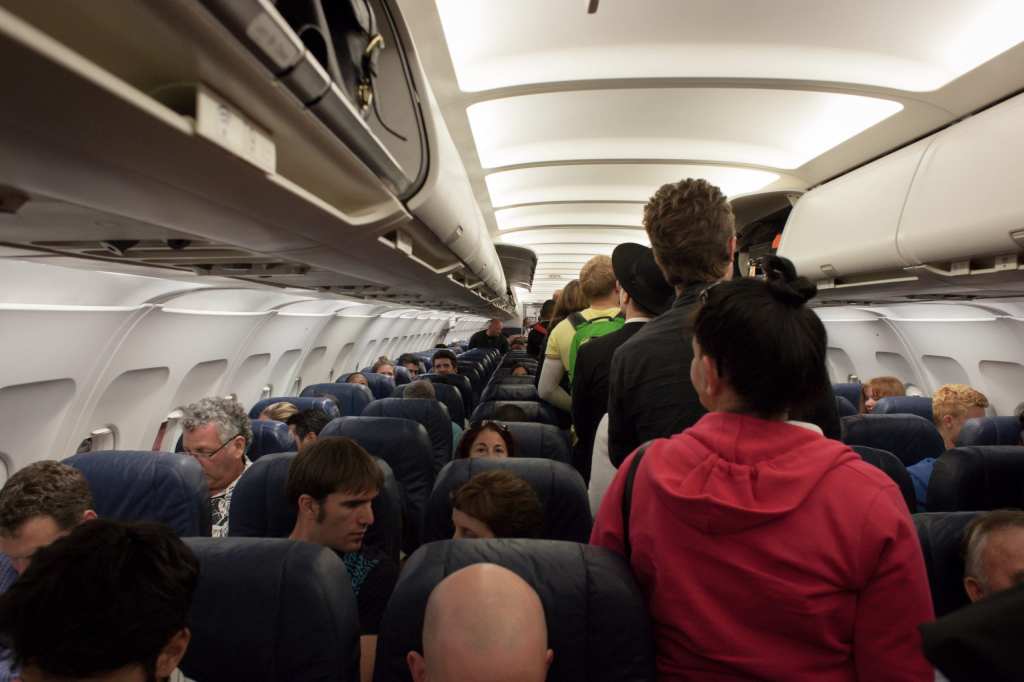Trending Now
Boarding a plane can be an exercise in frustration and impatience for many of us. It seems to take an eternity to get to your seat, stow your luggage, and rest in for what is hopefully a quick, easy, and most importantly, on-time flight.
And when you fly different airlines, they always have a different method than the last carrier you used. But even if the actual flight part goes off without a hitch, why does the boarding process seem so random and why does it seem to take forever?
Is there a method behind the madness?

Photo Credit: Pixabay
The answer is yes.
The boarding process is planned out and airlines use different methods to get passengers on those planes so they can hit the runway and take off. The back-to-front boarding process seems like it would be the most efficient and time-effective.
It makes sense, at least in theory. Passengers fill up the back of the plane and eventually the front is filled in. But this method is by the far the slowest of the options. In fact, the TV show Mythbusters tested all the popular boarding processes and found the back-to-front to be the slowest, with an average of more than 24 minutes.
But being the slowest method doesn’t stop many of the major airlines from employing back-to-front boarding, including JetBlue, Spirit, and Delta.
Another method is “Random with Assigned Seats“.
This method, employed by Frontier, averages just over 17 minutes for boarding, so it’s roughly 7 minutes faster than the back-to-front system. This one is exactly what it sounds like. Unless you pay an extra fee, you’ll be assigned a boarding spot randomly.

Photo Credit: Unsplash,Rob Bye
The outside-in method (also known as “WilMA”, Window, Middle, Aisle) is even quicker, with an average of just under 15 minutes.
With this boarding procedure, passengers who have window seats board first, followed by those seated in the middle, and finally, the people who have aisle seats board last. United Airlines is the only big carrier to use this method, even though it’s been tested and proven to be quicker than the previous two approaches. One downfall to the WilMA method is that people who prefer the aisle (me!) might not have any overhead compartment space left since they’ll be the last ones to get on board. Despite that, this boarding process scores highest on the customer satisfaction scale.
And finally, we have Southwest Airlines.
If you’ve ever flown on Southwest, you either love it or you hate it. The airline is known for its unique boarding process, where it’s basically first come-first serve. Passengers are assigned a zone (either A, B, or C) and then a number in that zone based on when they check in online. The zones board and it’s a free-for-all.

Photo Credit: US Air Force
Passengers can pick any open seat that their heart desires. With Southwest, it pays off to check in as soon as possible, or you’ll be stuck in a center seat between two people who are peeved that you took their extra leg (and arm) room.
Oh, and the boarding time with this method? Believe it or not, it’s the fastest, at just over 14 minutes. That’s 10 minutes faster on average than the puzzlingly popular back-to-front method.

Photo Credit: YouTube,Mythbusters
There are other ways to speed up boarding times other than new procedures and tricks. Spirit Airlines started charging for carry-on bags. It was only $2 cheaper to check a bag for one of its flights, and the airline discovered that most people simply checked their bags and that their boarding process decreased by 6 minutes. So airlines can get clever with monetary factors to influence boarding times as well.
Whether you’re a frequent traveler or you only get out of town once in a blue moon, keep this information in mind next time you book a flight.
If you’re a picky traveler and you have little tolerance for shenanigans, you might be more inclined to choose one airline over another solely based on their boarding methods.






